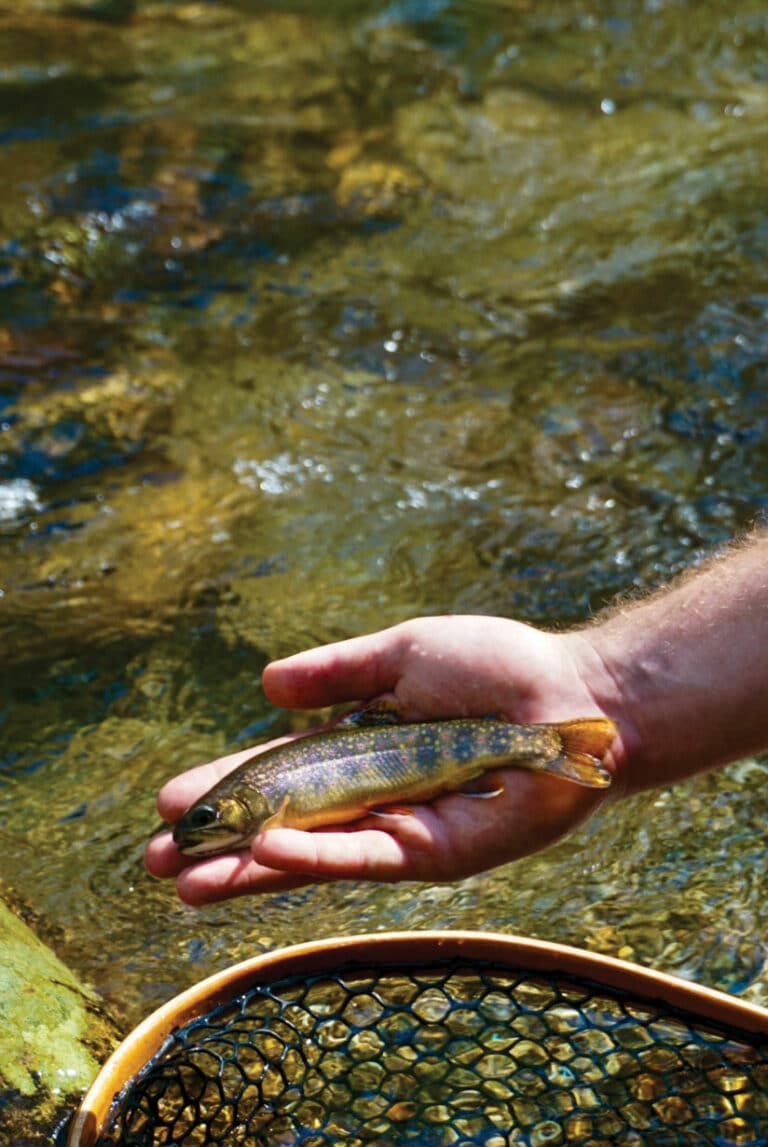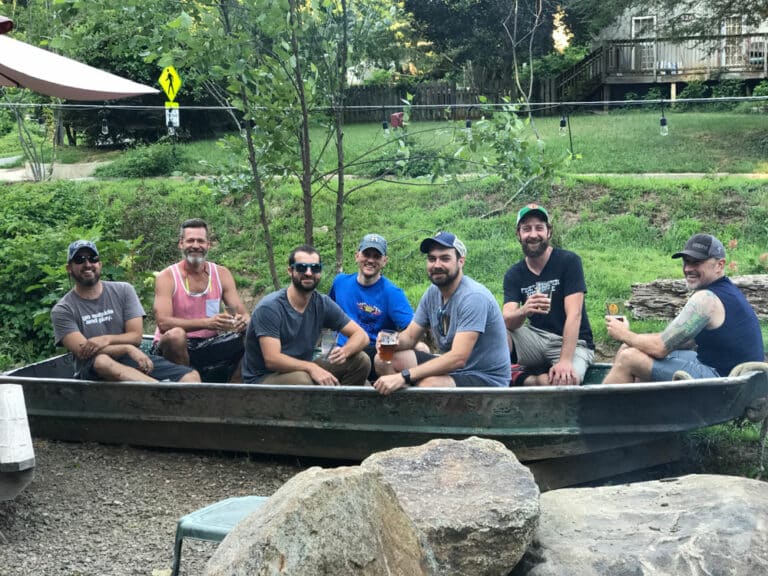Backpacking beginner?
Ask the Experts
How do I decide what type of boots to buy?
Different boots are compatible with different feet. Make sure you try on several pairs before making a selection. The best beginner boot is the one that fits you the best, and the one that is stable and strong.
If your new boots feel a little stiff at first, make sure to take a few walks around the neighborhood before you hit the trail.
<em>John Holden, Blue Ridge Mountain Sports
</em>
What are the best methods for water purification?
Getting a gastrointestinal illness in the backcountry is no fun, so you have to kill the protozoa and bacteria in the water gathered from mountain streams. There are three main ways to get safe drinking water: Boiling is simple and very effective, but fuel weight and cooling time are drawbacks. The second mothod-filtration-is generally the best way to go, but one of the disadvantages is cleaning the filter. Make sure you buy a filter that you can easily clean in the field. For safety you don’t want for a filter bigger than .2 microns. The third method is chemical treatment like iodine or chlorine dioxide. You can have a one-ounce bottle of purification tablets, but a disadvantage is they taste, well, like chemicals. You can always flavor it with Kool-Aid or Tang.
<em>
Todd Ratermann, Southeastern Outdoors</em>
I’ve heard a lot about ultra-light backpacking. How can I reduce weight in my pack without leaving out essentials?
Clothes tend to be what a lot of people over pack. Try to look at your clothing as providing double duty. For instance, your rain or wind pants can also be your camp pants if it turns cool, so you can leave the long johns or tights at home. This tip applies to three-season camping only.
You can also reduce your pack weight by repackaging your food before you leave home. Remove it from cardboard or store packaging and utilize ziplocks (a hiker’s best friend). It will also be less to pack out.
<em>
Melody Blaney, Wildside Adventures for Women</em>
How many miles or days should I start out backpacking?
The first time out, a beginner backpacker should attempt a two-day, one-night trip. The distance depends on many factors: How good of physical shape are you in? How mountainous is the selected trail? How do you handle elevation changes? Research the trail and measure it against your own limitations.
<em>
Margie Cohen, Geared to Go</em>
<hr size=”1″ color=”#000″ width=”100%”/>
Gear Checklist
-Backpack with waterproof cover
-Tent with ground footprint
-Head Lamp
-Two quarts of water to start
-Water Purification
-Sleeping Bag
-Sleeping Pad
-Extra Socks
-Extra Warm Layer
-Topo Map
-Compass
-Waterproof Jacket
-Stove with adequate fuel
-Cooking Utensils
-First Aid Kit
<hr size=”1″ color=”#000″ width=”100%”/>
PACK FITTING TIPS
-The majority of the weight needs to be placed on the hip belt.
-The hip belt should rest on the top of your pelvis. The measurement of the strap length around the top of the pelvis determines the hip belt size.
-Pack size is determined by torso length, which does not necessarily have anything to do with how big or small a person is.
-Torso length is measured from the hip belt to the base of the neck.
-A properly fitting pack will be secure on you shoulders, not pulling back by force of weight.
-The shoulder straps should always run right along the middle of the shoulder.
<hr size=”1″ color=”#000″ width=”100%”/>
FEAR FACTOR
One of the biggest deterrents for a lot of first-time backpackers is a fear of wildlife, particularly bears. Bears frequently have been portrayed as ferocious creatures, but in reality bears are non-confrontational animals that typically avoid humans.
“Bears really are happier away from people,” says Andy Nichols, who leads backpacking trips with Teamlink Training Center. “They do not want to sleep with you, unless you have a midnight snack in your sleeping bag.”
According to the Wildlife Research Institute, wild black bears have killed less than three-dozen people across North America this century. Being murdered is 90,000 times more likely than being killed by a bear.
“We can’t stress enough practicing proper food storage-for the safety of people and bears,” says Jim Atkinson, a biologist at Shenandoah National Park. A few tips:
-Store your food and other scented items (including toothpaste, lip balm, and garbage) in a proper food bag that is 10 feet high and 4 feet out from the tree trunk.
-Prepare food away from your tents or sleeping area.
-Keep a clean camp by leaving no food or litter, and clean all cooking utensils.
-Store food leftovers and food wastes in a food bag and carry them out of the backcountry.
If you do come across a bear in the Blue Ridge region, avoid eye contact and slowly walk away. If it follows or threatens you, shout, make loud noises with cooking or other gear, and throw rocks or sticks in the direction of the bear. Use pepper spray if it gets in close proximity to you.
<hr size=”1″ color=”#000″ width=”100%”/>
BEGINNER BACKPACKING SPOTS
Cades Cove, Great Smoky Mountains National Park, Tenn.: If you want to get a good introduction to the Smokies, try a 13.2-mile loop in the Cades Cove Area on the Anthony Creek, Russell Field and Bote Mountain Trails. Here you can get a taste of steep climbing with a little over 3,000 feet of elevation gain and stay at one of the two designated backcountry campsites or shelters (reservations required) along the way.
Marshall Mountains Loop, Shenandoah National Park, Va.: This loop hike on the Appalachian, Bluff, and Marshall Trails will also give you a taste of some moderate ascents, but the short distance of 13 miles makes it a great introductory weekender. Starting at mile 12.3 of Skyline Drive in northern SNP, this overnight will also give you a taste of two 3,000-foot summits, North and South Marshall Mountains.
Pine Mountain Trail, FDR State Park, Ga.: The Pine Mountain Trail is 23 miles with lots of loop options for shorter distances. The trail is very well marked and maintained. It also parallels a well-paved road throughout its distance making safety issues easier to manage.
Crowders Mountain State Park, N.C.: Crowders Mountain is a perfect spot for those looking to get a basic taste of the wild. The foothills park is a quick getaway for many urbanites, (30 minutes west of Charlotte) and has 10 backcountry campsites and 15 miles of trail that can include a 1,625-foot summit of the eponymous peak.







